Harmonized System (Tariff)
This section contains information on the use of the Harmonized System (Tariff) in Timor-Leste. You can learn more basic information by downloading our information booklet here.
If you would like more comprehensive information about the HS code, you can also access and download the following resources:
Background
When importing or exporting any commercial goods, you must utilize the Harmonized Commodity Description and Coding System. In most countries, this is known as the “HS”. These codes are used extensively by over 200 countries who are contracted to the Convention on the Harmonized Commodity Description and Coding System (also known as the ‘HS Convention’). Customs authorities not only use HS codes to identify what goods are being shipped, they also use them to apply relevant customs duties, taxes, and regulations. Governments also use HS codes to collect global trade statistics and create tariffs. Private companies use the same system to monitor goods, develop and advocate trade policies, collect statistics on traffic and transport as well as monitor prices.
International Context
The HS comprises approximately 5,300 article/product descriptions that appear as headings and subheadings, arranged in 97 chapters, grouped in 21 sections. This may seem confusing at first, but this level of detail is needed when you consider all the different types of goods that exist in the World today. At the international level, a six-digit code system is used for classifying goods, which is broken down into three parts. Up to the HS-6-digit level, all countries classify products in the same way.
Use of the HS in Timor-Leste
Timor-Leste uses 8 numerical digits, meaning that a detailed level of description is required. If your commercial invoice is incomplete, it is unlikely you will be able to establish this level of detail. In addition to providing the government with important trade related data, the correct classification of your goods is a legal requirement under Article 154 of the Customs Code (Decree Law: 14/2017). You can access and download a copy of the Customs Code here.
Timor-Leste utilizes the 8-digit format when applying the HS Code. The first two digits categorize the product (chapter), the second two define this classification further (heading), and the final set of four digits specify the product in more detail (HS Subheading and ASEAN Subheading):
| Chapter | Heading | Subheading(HS) | Subheading(ASEAN) |
| 21 | 06 | 90 | 11 |
| First two digits indicate the Chapter. Each chapter consists of chapter notes, codes and descriptions of commodities | Second two digits indicate the position of the heading in the chapter | Each heading is then subdivided into subheadings, indicated by the dashes: (-), (- -), (- - -), (- - - -) and (- - - - -). |
|
What Information Should I Provide to my Agent or Customs Broker?
To help ensure that your goods are processed by Customs as quickly and smoothly as possible, it is important that you provide your agent or broker with all the correct information from the very beginning. In all cases, this should include:
- Packing list with quantities: net and gross weights for each item (certain goods also have specific ‘units of measurement’ that must be included, for example alcohol is declared in liters, new clothing is declared in pieces, footwear is declared in pairs, floor tiles are declared by Meter Squared etc.);
- Transport documentation, i.e., Airway Bill or Bill of Lading;
- Commercial Invoice(s): Remember, this should include accurate and detailed descriptions of the goods that you are importing. Generic descriptions such as ‘shoes’, ‘fridge’ or ‘shirts’ are not sufficient to allow your broker to complete his/her task of accurately classifying the goods; and
- In some cases, other permits or licenses may be required depending on the nature of the goods (commodities).
Unique/Simple items with Dedicated HS Codes
In some cases, certain goods have their own dedicated HS code. Examples of these goods are listed below:
Wood clothes hangers
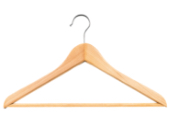
4421 10 00
Candles

3406 00 00
Plastic Flip Flop/ Beach sandal

6402 20 00
Playing Cards

9504 40 00
Helmets for motorcyclists

6506 10 20
Swivel seats with variable height Adjustment

9401 30 00
Work gloves

6216 00 10
Plastic Cigarette lighter (non-refillable)
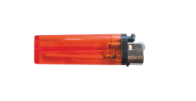
9613 10 10
Plantains

0803 10 00
Instant Noodles

1902 30 40
Second Hand Clothing and other

6309 00 00
Bamboo

1401 10 00
Hand Sanitizer

3808 90 99
Surgical masks

6307 90 40
Cigars

2402 10 00
Goods with different HS Codes depend on the material they are made from
In some cases, it is important to factor in what material the goods are made from. For example, you might think that descriptions such as sports shoes, flour, carpets, or cigarette lighters, is sufficient, but this is not the case. Below are some examples highlighting how generically described goods can be classified differently based on their composition and/or what they are made of:
Sports Shoes, Soles and uppers of Rubber or Plastic
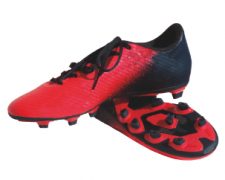
6402 19 90
Sports shoes…textile uppers
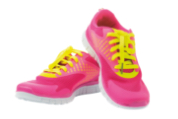
6404 11 90
Sports shoes…leather uppers
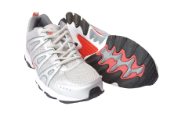
6403 19 90
Flour

6402 19 90
| Flour made from potatoes: | 1105 10 00 |
| Flour made from sweet potato: | 1106 20 30 |
| Flour made from soya beans: | 1208 10 00 |
| Flour made from wheat: | 1101 00 11 |
| Flour made from Maize: | 1102 20 00 |
| Flour made from Rice: | 1102 90 10 |
| Flour made of Cassava: | 1106 20 10 |
Carpets

6402 19 90
| Carpets of coconut fibres: | 5702 20 00 |
| Carpets of wool or Animal hair: | 5702 31 00 |
| Carpets of man-made textile: | 5702 32 00 |
| Carpets of Cotton: | 5702 39 10 |
| Carpets of jute fibres: | 5702 39 20 |
Lighters
6402 19 90
| Plastic lighter (non-refillable): | 9613 10 10 |
| Plastic lighter (refillable): | 9613 20 10 |
| Metallic Cigarette lighter: | 9613 20 90 |
Goods with two or more variants (Technical Goods)
Certain goods, such as those with two or more variants (Technical Goods), require full specifications before you can identify the correct HS Code. These types of details should already be present on your commercial invoice. In some cases, it may also be useful to provide your agent or broker with details of brand names or part numbers, as it will assist them in identifying additional information via the internet where necessary. These types of goods may include:
A number of examples are listed here showing the type of information that you would need to get from the first four HS digits to the full eight digits:
Electric Motors (8501):
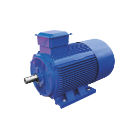
- What is the output in Watts?
- Is it Alternating Current (AC) or Direct Current (DC) or both?
- Is it for an Air Conditioning Machine,
- Refrigerator, Washing Machine, etc?
Batteries: (8506 / 8507)

- What is it made of? (for example Manganese dioxide, Lithium etc.)
- What is the volume in cm3?
- What is the voltage?
Photocopiers/ Printers (8443)

- What type is it? (Laser, Ink-Jet, dot-matrix)
- Does it print Colour, Black and White or both?
- What functions does it have? (Fax, Copy, Print and Scan, etc).
- Can it be set-up on a network?
INCOTERMS
Background
Different practices and legal interpretations between traders around the world necessitated a common set of rules and guidelines and, as a result, the International Chamber of Commerce launched the first Incoterms (an acronym which meaning “international commercial terms”) rules in 1936. More comprehensive guidance on the use of Incoterms can be found by visiting the International Chamber of Commerce website here.
Why are Incoterms important?
Incoterms identify the division of costs and risks between the buyer and seller when shipping internationally. Unlike national trade policies, Incoterms rules are universal, providing clarity and predictability to business around the world. Including the Incoterm is a requirement on all commercial invoices, as doing so reduces the risk of potentially costly misunderstandings or liabilities.
What are the different types of Incoterms?
There are a total of 10 different types of Incoterms, which are broken down into two main categories:
Those that apply to any mode of transport:
- EXW = Ex Works
- FCA = Free Carrier
- CPT = Carriage Paid To
- CIP = Carriage and Insurance Paid To
- DPU = Delivered at Place Unloaded (former DAT Delivered at Terminal)
- DDP = Delivered Duty Paid
Incoterms that apply to sea and inland waterway transport only:
- FAS = Free Alongside Ship
- FOB = Free on Board
- CFR = Cost and Freight
- CIF = Cost, Insurance, and Freight
Use of Incoterms in Timor-Leste
The most applied Incoterms used for goods being imported into Timor-Leste are listed below:
- FOB (Free on Board):
When shipping on FOB terms, the seller is responsible for all origin charges. This includes loading onto the named vessel. The risks and costs are then transferred to the buyer. The buyer is then responsible for the freight, any insurance required, and all charges to the destination. - CFR (Cost and Freight):
The CFR incoterm means all charges, including freight up until the intended port of destination, are born by the seller. However, as a buyer be cautious. The risk for the buyer takes over when the goods are loaded on the vessel, so even though you are not paying for the freight you may want to insure your shipment. All remaining charges at the destination are then settled by the buyer. - CIF (Cost, Insurance and Freight):
This term is the same as CFR only the seller is responsible for the goods and any insurance up until the goods arrive at the intended destination port. Once the goods arrive the buyer takes on all risks and final associated charges.